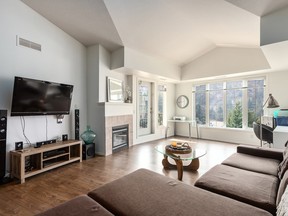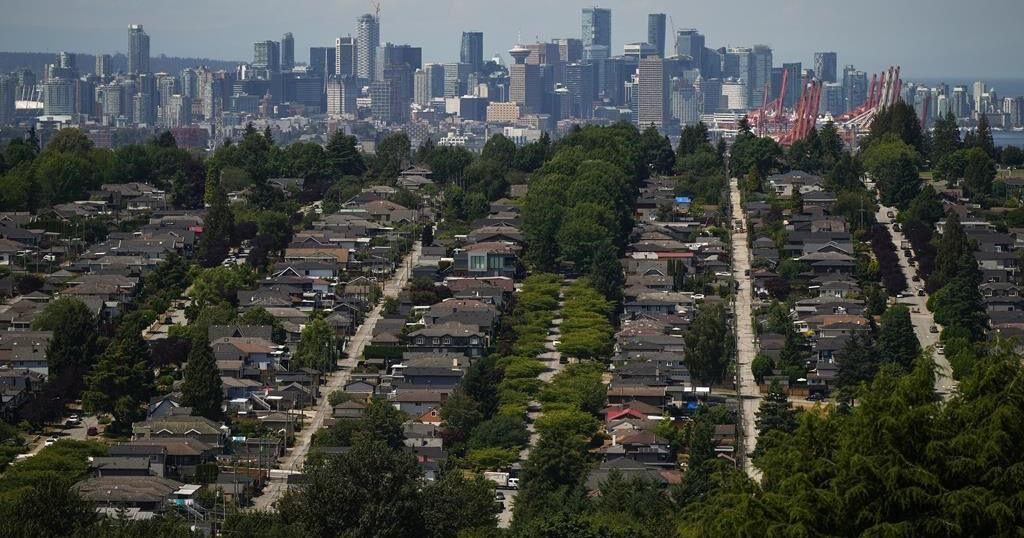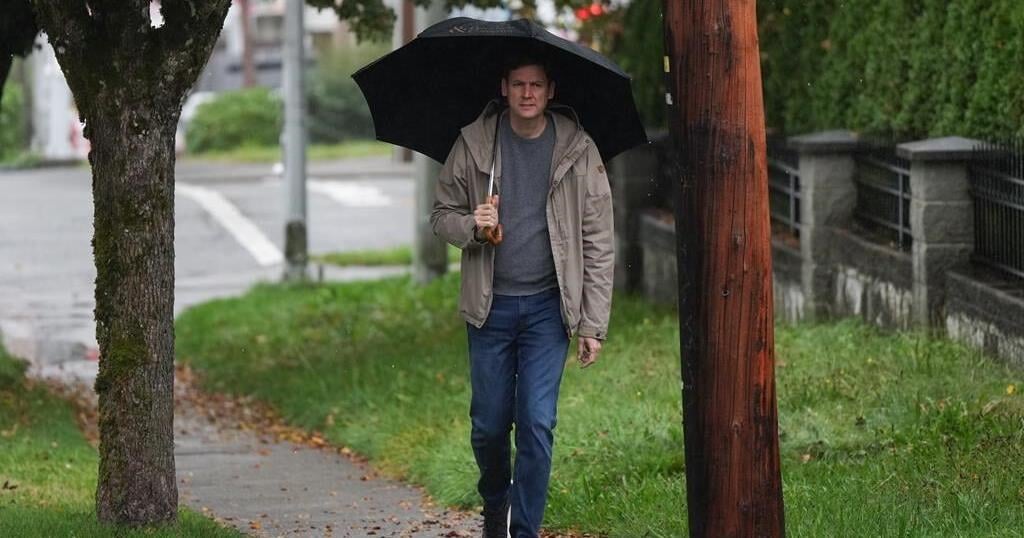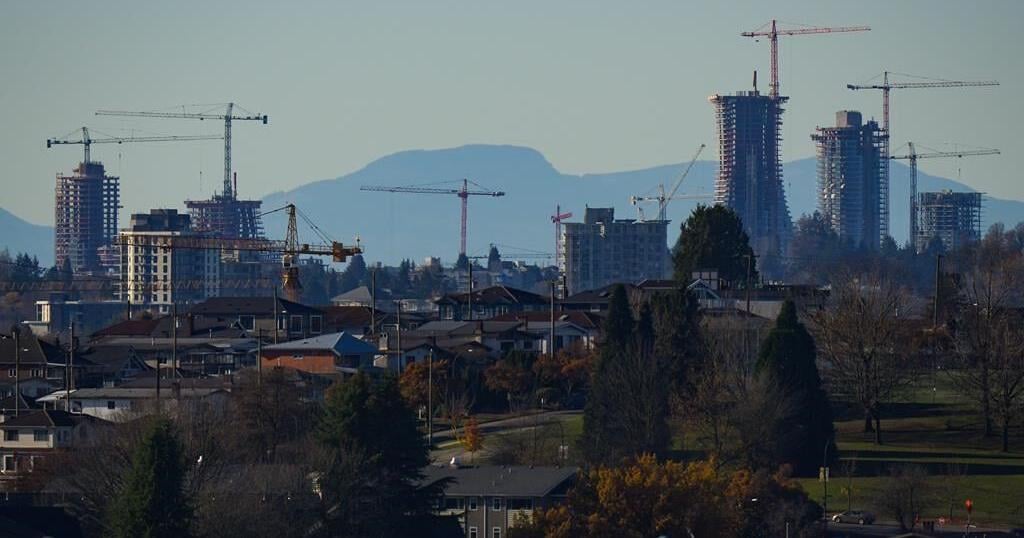Reviews and recommendations are unbiased and products are independently selected. Postmedia may earn an affiliate commission from purchases made through links on this page.
Real eState
What $500,000 will get you in the Okanagan's real estate market – Vancouver Sun
Inventory is low, but due to rising interest rates, so is the number of prospective buyers.

Article content
Like the rest of the province, the Interior real estate market is undergoing adjustments. Inventory is low, but due to rising interest rates, so is the number of prospective buyers.
Advertisement 2
Article content
“The condo market in the Interior is following trends, especially in the greater Kelowna or what we would call central Okanagan area,” said Lyndi Cruickshank, president of the Association of Interior Realtors.
Article content
“We’ve certainly seen a decline, not only in prices, but number of units sold. The two typically go hand-in-hand. The other indicator is how long something takes to sell.”
The Kootenays housing market is in slightly better shape. “It’s an area where we’ve seen some continued strength beyond the softening of some of our other markets, particularly in the Interior. Over the last few years, it’s seen some popularity growth as far as lifestyle. And cost of living there is significantly lower than some of our other markets, like the central Okanagan.”
Advertisement 3
Article content
In the coming years, the Okanagan market will see a boost in inventory.
“With the popularity of the area, there’s been a lot of development, which is great,” Cruickshank said. “There’s a lot of development going on in the downtown core of Kelowna, and there’s the anticipation of more new housing. More inventory is desperately needed throughout the entire province.”
But the supply chains for new housing “are still pretty tight,” she said. “The access to inventory to do the builds is different than it was five years ago. And the costs to do those builds are significantly different. We need builders and developers to see the opportunities for themselves as well as the communities that they serve.”
At the moment, here are some examples of what’s on the market in the Interior.
Advertisement 4
Article content
Kelowna
There aren’t many, but a two-bedroom, one-thousand-plus-square-foot condo can still be found for under $500,000. You’re not likely to find anything lakeside for that amount, but many of the complexes have a pool and mountain and/or valley views.

#2413 3178 Via Centrale St.
$499,000
Two bedrooms and a den large enough for a third make this 1,170-square-foot home one of the more spacious units currently on the Kelowna market for under $500,000. It’s a top-floor unit with vaulted ceilings and a fireplace. Amenities include a shared pool and hot tub, and the building is next to two golf courses and not far from UBC Okanagan and the airport.
#104 1966 Enterprise Way
$475,000
This upgraded one-bed, two-bath, 829-square-foot unit features include an open-concept living room with fireplace, hardwood flooring, large windows, and a fully covered patio surrounded with greenery overlooking a ravine. The kitchen features stainless steel appliances, white soft-close cabinetry, quartz countertops and backsplash, and an island. The Meadowbrook complex’s perks are an outdoor heated pool, clubhouse, rentable guest suite, and secured underground parking with a carwash station and a storage unit.
Advertisement 5
Article content
Vernon
Less than an hour from Kelowna, the same amount of capital will purchase a standalone townhouse, duplex, or even a detached house. As with Kelowna, there wasn’t much in our selected price range, but some properties stood out.
28-8800 Adventure Bay Rd.
$479,500

On the shores of Okanagan Lake, this fully renovated 788-square-foot two-bedroom townhouse offers sweeping views and is steps from its own private lakeshore beach. A mostly-covered 280-square-foot deck sweetens the deal. Other features include a boat buoy, storage room and wall-mounted locker. The Adventure Bay townhouse is situated 15 minutes away from downtown Vernon and 45 minutes from Silver Star Resort.
3702-15 Ave.
$499,900
Recently renovated, this centrally located three-bedroom, two-bathroom duplex sports new coats of paint throughout. Quartz countertops in the kitchen and granite countertops in the two bathrooms, along with new cabinets and fixtures, are among the updates. A new roof and asphalt driveway have been installed as well. The second floor holds three bedrooms, including a large master with an ensuite and an office converted to a fourth bedroom with access to a large deck. The home is located in Mission Hill and is close to schools, parks, and transit.
Advertisement 6
Article content
Penticton
We found even less here in our price range than in Vernon or Kelowna—a couple of townhouses, a handful of condos, and one house.
#303-3589 Skaha Lake Road
$499,500

This two-bedroom, two-bath, 1,058-square-foot condo is in the south end of Penticton, across the street from Skaha Lake, with access to the beach and parks. Features include an open floor plan, large windows, a large covered balcony off the living room with gas barbecue hookups, and heated floors. The primary bedroom has a walk-in closet and ensuite with a soaker tub.
417 Caribou St.
$499,000
It’s in need of some TLC, according to the listing, but hey, it’s a detached house for under $500,000 in the Okanagan. Too, “the walk-score is through the roof” since it’s “just minutes” to the lake, downtown, schools, shopping, the South Okanagan Events Centre and a casino. The three-bed, two-bath, 1,243-square-foot home also has a covered rear deck.
-

Sold (Bought): What does $7.2M buy in West Van’s British Properties?
-

Here are the 7 most expensive condos for sale in Vancouver right now
Real eState
Here are some facts about British Columbia’s housing market

Housing affordability is a key issue in the provincial election campaign in British Columbia, particularly in major centres.
Here are some statistics about housing in B.C. from the Canada Mortgage and Housing Corporation’s 2024 Rental Market Report, issued in January, and the B.C. Real Estate Association’s August 2024 report.
Average residential home price in B.C.: $938,500
Average price in greater Vancouver (2024 year to date): $1,304,438
Average price in greater Victoria (2024 year to date): $979,103
Average price in the Okanagan (2024 year to date): $748,015
Average two-bedroom purpose-built rental in Vancouver: $2,181
Average two-bedroom purpose-built rental in Victoria: $1,839
Average two-bedroom purpose-built rental in Canada: $1,359
Rental vacancy rate in Vancouver: 0.9 per cent
How much more do new renters in Vancouver pay compared with renters who have occupied their home for at least a year: 27 per cent
This report by The Canadian Press was first published Oct. 17, 2024.
The Canadian Press. All rights reserved.
Real eState
B.C. voters face atmospheric river with heavy rain, high winds on election day

VANCOUVER – Voters along the south coast of British Columbia who have not cast their ballots yet will have to contend with heavy rain and high winds from an incoming atmospheric river weather system on election day.
Environment Canada says the weather system will bring prolonged heavy rain to Metro Vancouver, the Sunshine Coast, Fraser Valley, Howe Sound, Whistler and Vancouver Island starting Friday.
The agency says strong winds with gusts up to 80 kilometres an hour will also develop on Saturday — the day thousands are expected to go to the polls across B.C. — in parts of Vancouver Island and Metro Vancouver.
Wednesday was the last day for advance voting, which started on Oct. 10.
More than 180,000 voters cast their votes Wednesday — the most ever on an advance voting day in B.C., beating the record set just days earlier on Oct. 10 of more than 170,000 votes.
Environment Canada says voters in the area of the atmospheric river can expect around 70 millimetres of precipitation generally and up to 100 millimetres along the coastal mountains, while parts of Vancouver Island could see as much as 200 millimetres of rainfall for the weekend.
An atmospheric river system in November 2021 created severe flooding and landslides that at one point severed most rail links between Vancouver’s port and the rest of Canada while inundating communities in the Fraser Valley and B.C. Interior.
This report by The Canadian Press was first published Oct. 17, 2024.
The Canadian Press. All rights reserved.
News
No shortage when it comes to B.C. housing policies, as Eby, Rustad offer clear choice

British Columbia voters face no shortage of policies when it comes to tackling the province’s housing woes in the run-up to Saturday’s election, with a clear choice for the next government’s approach.
David Eby’s New Democrats say the housing market on its own will not deliver the homes people need, while B.C. Conservative Leader John Rustad saysgovernment is part of the problem and B.C. needs to “unleash” the potential of the private sector.
But Andy Yan, director of the City Program at Simon Fraser University, said the “punchline” was that neither would have a hand in regulating interest rates, the “giant X-factor” in housing affordability.
“The one policy that controls it all just happens to be a policy that the province, whoever wins, has absolutely no control over,” said Yan, who made a name for himself scrutinizing B.C.’s chronic affordability problems.
Some metrics have shown those problems easing, with Eby pointing to what he said was a seven per cent drop in rent prices in Vancouver.
But Statistics Canada says 2021 census data shows that 25.5 per cent of B.C. households were paying at least 30 per cent of their income on shelter costs, the worst for any province or territory.
Yan said government had “access to a few levers” aimed at boosting housing affordability, and Eby has been pulling several.
Yet a host of other factors are at play, rates in particular, Yan said.
“This is what makes housing so frustrating, right? It takes time. It takes decades through which solutions and policies play out,” Yan said.
Rustad, meanwhile, is running on a “deregulation” platform.
He has pledged to scrap key NDP housing initiatives, including the speculation and vacancy tax, restrictions on short-term rentals,and legislation aimed at boosting small-scale density in single-family neighbourhoods.
Green Leader Sonia Furstenau, meanwhile, says “commodification” of housing by large investors is a major factor driving up costs, and her party would prioritize people most vulnerable in the housing market.
Yan said it was too soon to fully assess the impact of the NDP government’s housing measures, but there was a risk housing challenges could get worse if certain safeguards were removed, such as policies that preserve existing rental homes.
If interest rates were to drop, spurring a surge of redevelopment, Yan said the new homes with higher rents could wipe the older, cheaper units off the map.
“There is this element of change and redevelopment that needs to occur as a city grows, yet the loss of that stock is part of really, the ongoing challenges,” Yan said.
Given the external forces buffeting the housing market, Yan said the question before voters this month was more about “narrative” than numbers.
“Who do you believe will deliver a better tomorrow?”
Yan said the market has limits, and governments play an important role in providing safeguards for those most vulnerable.
The market “won’t by itself deal with their housing needs,” Yan said, especially given what he described as B.C.’s “30-year deficit of non-market housing.”
IS HOUSING THE ‘GOVERNMENT’S JOB’?
Craig Jones, associate director of the Housing Research Collaborative at the University of British Columbia, echoed Yan, saying people are in “housing distress” and in urgent need of help in the form of social or non-market housing.
“The amount of housing that it’s going to take through straight-up supply to arrive at affordability, it’s more than the system can actually produce,” he said.
Among the three leaders, Yan said it was Furstenau who had focused on the role of the “financialization” of housing, or large investors using housing for profit.
“It really squeezes renters,” he said of the trend. “It captures those units that would ordinarily become affordable and moves (them) into an investment product.”
The Greens’ platform includes a pledge to advocate for federal legislation banning the sale of residential units toreal estate investment trusts, known as REITs.
The party has also proposed a two per cent tax on homes valued at $3 million or higher, while committing $1.5 billion to build 26,000 non-market units each year.
Eby’s NDP government has enacted a suite of policies aimed at speeding up the development and availability of middle-income housing and affordable rentals.
They include the Rental Protection Fund, which Jones described as a “cutting-edge” policy. The $500-million fund enables non-profit organizations to purchase and manage existing rental buildings with the goal of preserving their affordability.
Another flagship NDP housing initiative, dubbed BC Builds, uses $2 billion in government financingto offer low-interest loans for the development of rental buildings on low-cost, underutilized land. Under the program, operators must offer at least 20 per cent of their units at 20 per cent below the market value.
Ravi Kahlon, the NDP candidate for Delta North who serves as Eby’s housing minister,said BC Builds was designed to navigate “huge headwinds” in housing development, including high interest rates, global inflation and the cost of land.
Boosting supply is one piece of the larger housing puzzle, Kahlon said in an interview before the start of the election campaign.
“We also need governments to invest and … come up with innovative programs to be able to get more affordability than the market can deliver,” he said.
The NDP is also pledging to help more middle-class, first-time buyers into the housing market with a plan to finance 40 per cent of the price on certain projects, with the money repayable as a loan and carrying an interest rate of 1.5 per cent. The government’s contribution would have to be repaid upon resale, plus 40 per cent of any increase in value.
The Canadian Press reached out several times requesting a housing-focused interview with Rustad or another Conservative representative, but received no followup.
At a press conference officially launching the Conservatives’ campaign, Rustad said Eby “seems to think that (housing) is government’s job.”
A key element of the Conservatives’ housing plans is a provincial tax exemption dubbed the “Rustad Rebate.” It would start in 2026 with residents able to deduct up to $1,500 per month for rent and mortgage costs, increasing to $3,000 in 2029.
Rustad also wants Ottawa to reintroduce a 1970s federal program that offered tax incentives to spur multi-unit residential building construction.
“It’s critical to bring that back and get the rental stock that we need built,” Rustad said of the so-called MURB program during the recent televised leaders’ debate.
Rustad also wants to axe B.C.’s speculation and vacancy tax, which Eby says has added 20,000 units to the long-term rental market, and repeal rules restricting short-term rentals on platforms such as Airbnb and Vrbo to an operator’s principal residence or one secondary suite.
“(First) of all it was foreigners, and then it was speculators, and then it was vacant properties, and then it was Airbnbs, instead of pointing at the real problem, which is government, and government is getting in the way,” Rustad said during the televised leaders’ debate.
Rustad has also promised to speed up approvals for rezoning and development applications, and to step in if a city fails to meet the six-month target.
Eby’s approach to clearing zoning and regulatory hurdles includes legislation passed last fall that requires municipalities with more than 5,000 residents to allow small-scale, multi-unit housing on lots previously zoned for single family homes.
The New Democrats have also recently announced a series of free, standardized building designs and a plan to fast-track prefabricated homes in the province.
A statement from B.C.’s Housing Ministry said more than 90 per cent of 188 local governments had adopted the New Democrats’ small-scale, multi-unit housing legislation as of last month, while 21 had received extensions allowing more time.
Rustad has pledged to repeal that law too, describing Eby’s approach as “authoritarian.”
The Greens are meanwhile pledging to spend $650 million in annual infrastructure funding for communities, increase subsidies for elderly renters, and bring in vacancy control measures to prevent landlords from drastically raising rents for new tenants.
Yan likened the Oct. 19 election to a “referendum about the course that David Eby has set” for housing, with Rustad “offering a completely different direction.”
Regardless of which party and leader emerges victorious, Yan said B.C.’s next government will be working against the clock, as well as cost pressures.
Yan said failing to deliver affordable homes for everyone, particularly people living on B.C. streets and young, working families, came at a cost to the whole province.
“It diminishes us as a society, but then also as an economy.”
This report by The Canadian Press was first published Oct. 17, 2024.
-

 Sports12 hours ago
Sports12 hours agoIn The Rings: Curling Canada still looking for Canadian Curling Trials title sponsor
-

 News12 hours ago
News12 hours agoAfter hurricane, with no running water, residents organize to meet a basic need
-

 Politics13 hours ago
Politics13 hours agoN.B. election debate: Tory leader forced to defend record on gender policy, housing
-

 News12 hours ago
News12 hours agoAlberta government shifts continuing care from Health to Seniors Ministry
-

 News12 hours ago
News12 hours agoBuhai, Green and Shin lead in South Korea after 8-under 64s in first round
-

 News12 hours ago
News12 hours agoManitoba government halts school building plan, says other methods will be found
-

 News12 hours ago
News12 hours ago‘Significant overreach’: Ontario municipalities slam province over bike lane rules
-

 Sports12 hours ago
Sports12 hours agoMaple Leafs winger Bobby McMann finding game after opening-night scratch




























